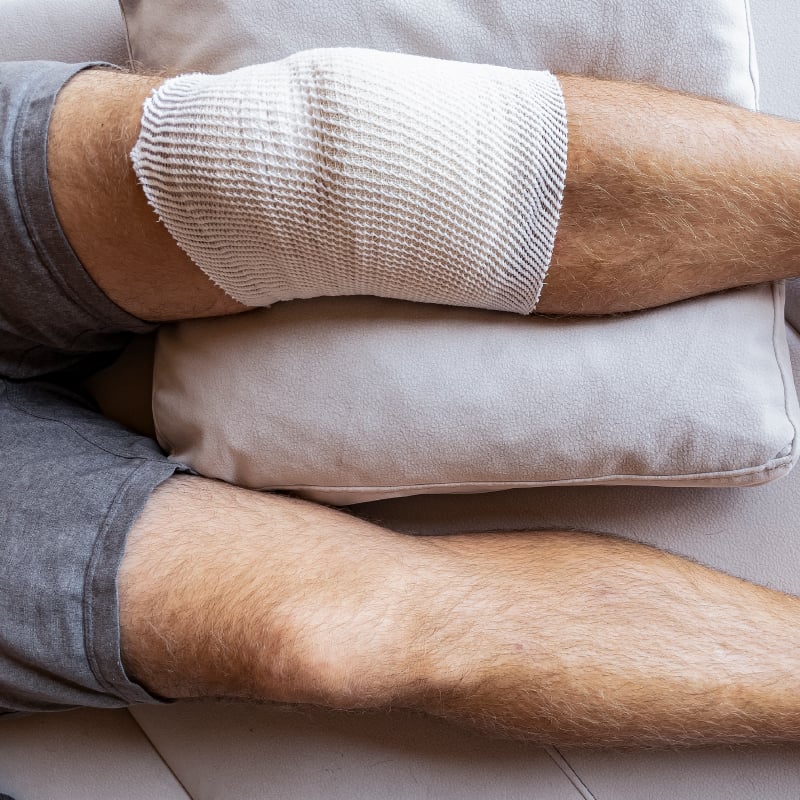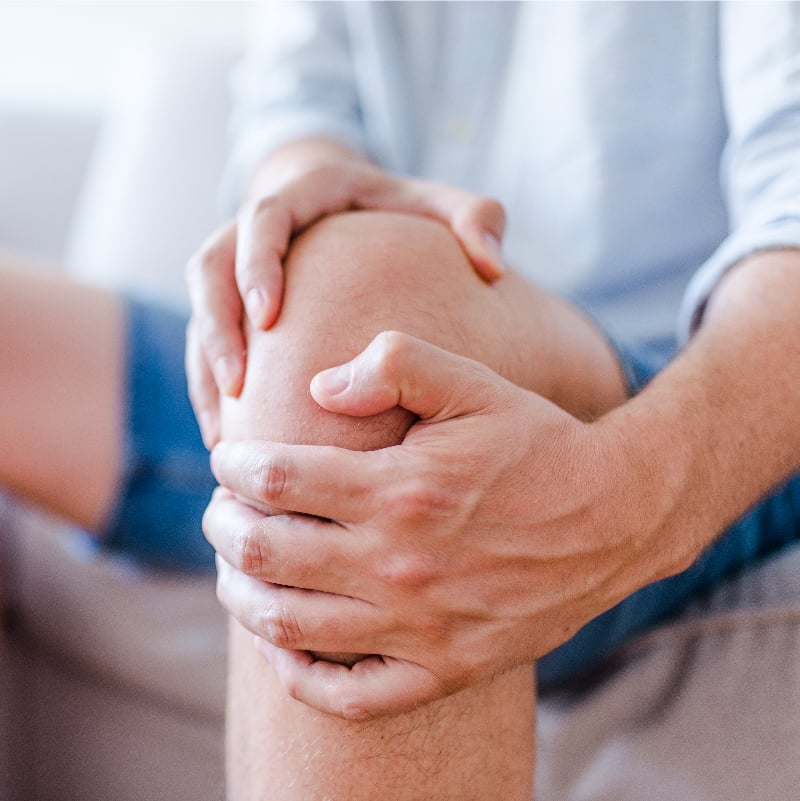More than 50 percent of U.S. adults over the age of 65 have clinical signs of arthritis - a term that encompasses nearly 100 different forms of the disease. The number of patients suffering from one form or another is expected to nearly double by the year 2030. It comes as no surprise that many orthopaedic patients suffer from degenerative arthritis, often in the form of osteoarthritis, and trust Rochester Regional Health doctors for care and management.
Osteoarthritis is a degenerative joint disease where the protective cartilage between two bones breaks down. When this happens, the two bones rub together which can cause a number of issues including pain, stiffness, and swelling. Osteoarthritis is often found in weight-bearing joints such as hips, knees, ankles, and the spine.
There are several methods that can help manage the disease once an individual is diagnosed. Pain, stiffness, and swelling can be managed with medication and therapy. Other factors, such as maintaining (or reaching) a healthy weight and getting enough exercise, can also help manage osteoarthritis symptoms while improving joint mobility and flexibility. Primarily, the doctors at Rochester Regional Health will work individually with patients to create unique care plans that address each person's particular form of osteoarthritis, which could include, but are not limited, to the following:
Common Medication Treatments
NSAIDs (Non-Steroidal Anti-Inflammatory Drugs)
These drugs - available both over the counter and by prescription - reduce swelling caused by inflammation and thus improve pain control as a result. Arguably they are the most commonly used drugs to treat osteoarthritis symptoms; however they must be used with caution. While they reduce inflammation, NSAIDs do nothing to slow or alter the disease and side effects could include gastrointestinal distress, allergic reactions, and in some prescription drug cases, contribute to possible birth defects.
Common Over the Counter NSAIDs: Naproxen (Aleve, Midol), Ibuprofen (Advil, Motrin), and others.
Common Prescription NSAIDs: Meloxicam (Mobic), Oxaprozin (Daypro), Celecoxib (Celebrex), and more.
Analgesics
Also available by prescription and over the counter, these drugs are typically strict pain killers. Analgesics help manage the pain often experienced by arthritis, but they do nothing to stop or reverse the progression of the disease. While analgesics are often the next most common method of pain management behind NSAIDs, doctors approach them with caution because of the possibility of patient abuse and addiction. For that reason, it's important to have open communication with your doctor regarding how well these drugs are working for your symptoms.
Common Over the Counter Analgesics: Acetaminophen (Tylenol, some Excedrins)
Common Prescription Analgesics: Vicodin, Percocet, and more.
Corticosteroids
These steroids have powerful anti-inflammatory properties that may help reduce swelling in problem areas. Corticosteroids are synthetic versions of naturally produced human hormones; however, serious side effects could arise that include, but are not limited to: high blood pressure, weight gain, and increased risk of infection. Therefore, it's important a patient and doctor discuss whether or not this treatment is the right option for his or her particular situation.
Common Prescription Corticosteroids: Prednisone, methylprednisolone, and prescription strength hydrocortisone
There are additional medications for pain management that could be discussed with the doctors at Rochester Regional Health if any of these treatments have not worked out for you in the past.
Common injections
Corticosteroids can be injected into arthritic joints and relieve the pain associated with inflammation within the joint. This can be associated with long term relief but is not right for everyone. As well, hyaluronic acids (Synvisc, Euflexxa, Durolane, Orthovisc, etc.) can be injected. In this procedure, a gel-like fluid is injected into the knee joint. This may take 1-3 injections over several weeks depending on the product your insurance approves for use. These are commonly called “lubrication shots” or “chicken shots.”
Sometimes, your injection may be difficult due to the advanced nature of your condition or due to the depth of the target internally. For this reason, your provider may recommend having your injection done under ultrasound guidance to improve accuracy and treatment outcomes.
Both of these procedures have risks and benefits and could be discussed with the physicians at Rochester Regional Health.
Alternative therapies for joint pain relief
Complementary and Alternative Medicine (CAM)
These therapies can include:
- Acupuncture/Acupressure
- Aromatherapy
- Herb application
- Homeopathy
- Hydrotherapy
- Reflexology
- Polarity therapy
- Reiki and touch therapy
Because alternative medicine therapies are not standardized or regulated, it's important to be aware of your own diagnosis as well as the reputation, credentials, and certifications of the therapist assisting you.
You should also thoroughly research all methods you might be considering and discuss these treatments with your assigned physician, fully understanding any possible negative side effects that could occur through your chosen therapy. Understanding the financial commitment required by an additional therapy is also key; most CAM therapies are not covered by insurance.
Interventional orthopedics
This is an emerging field of orthopedic medicine that is advancing care for non-operative conditions while also serving to complement standard surgical care conditions. Our team of interventional specialists can often improve or heal both acute and chronic conditions that are not responding to initial standard treatments such as anti-inflammatory medications, physical therapy, or steroid injections. Joint pain is influenced by surrounding tendon and ligament conditions which our specialists consider when developing your treatment plan.
One of the treatment options our interventional team specializes in is orthobiologics or regenerative medicine. This cutting-edge orthopedic therapy can help you potentially avoid or prolong the need for surgery while reducing pain, improving functionality, and giving you a better quality of life. These therapies harness your body’s own ability to heal itself and/or manage an inflammatory response. Treatments include:
- Platelet Rich Plasma (PRP)
- Bone marrow concentrate
- Lipoaspirate (Microfat)
Orthobiologic options are typically not covered by insurance; however HSA/FSA accounts typically can be used to cover the cost.
Additionally, there are many conditions that do not respond to standard care options but also will not respond to surgery. Tendon health has a significant effect on the stability of the joint and can lessen pain. Tendinopathy (chronic tendon thickening) and partial tears can be healed through a procedure called TenJet. This is a minimally invasive procedure that can help clear out damaged tendon tissue and stimulate a controlled healing response. This procedure is well covered by insurance carriers.
Talk with your primary care provider about a referral to our interventional orthopedic specialists if this sounds like a potential pain relief option that could work for you.









